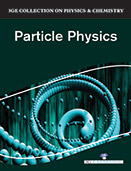Physics

Particle Physics signifies one of the greatest accomplishments of mankind. It follows the reductionist prototype which has dominated the thinking driving the scientific revolution since the times of Galileo, Descartes and Newton. Particle physics seeks to understand the evolution of the Universe in the first fraction of a second after its birth in the Big Bang in terms of a small number of fundamental particles and forces. The processes involved ultimately resulted in the creation of atoms and the complex molecules that led to our existence. The intellectual curiosity embodied in particle physics is also at the foundation of philosophy, art and other scientific disciplines which, together, have shaped the modern world. The belief that no understanding of a system is complete unless it also incorporates an understanding of its constituents is as relevant today as it was in the Seventeenth Century. High Energy Physics probes the nature of fundamental particles and of the space between them. On the tiny distance scales probed with today's facilities, quantum effects blur the distinctions between matter and forces, with virtual particles flitting in and out of existence over unimaginably time durations. At yet smaller distance scales (or equivalently higher energies) theories requiring a quantum understanding of space-time, the domain of quantum-gravity, are required.
This book entitled “Particle Physics” gives a unified presentation of the entire subject of particle physics, including with a self-contained discussion of quantum field theory and going on with the symmetry and interaction of particles.
In recent years it has become recognized that accelerator laboratories need to cooperate more closely with their industrial supply chains to ensure sustainability of this commercial base. This includes assistance to strategic planning by early warning of future projects, together with identification of technological challenges ahead. Medical physics, for instance, has been one of the areas to benefit most from all the different technologies developed for particle physics. As examples, in this field, betatron and linear accelerators are used to administer radiation therapy in hospitals, while positron emission tomography (PET) deals with a powerful diagnostic tool together with computer tomography. Synchrotron radiation was first discovered at the high-energy accelerators used for particle physics experiments. Today, it is an extremely useful tool in many areas of research, both pure and applied. Tools using synchrotron radiation are used in medical imaging, environmental science, and materials science and engineering, surface chemistry, biotechnology, as well as the manufacture of advanced microchips. An introduction to modern particle physics includes all the recent developments in elementary particle physics, as well as its relations with cosmology and astrophysics; this novel edition will be of interest for students studying this subject in undergraduate and graduate courses.